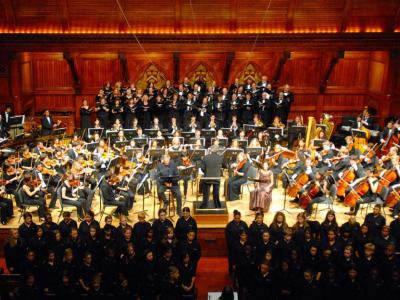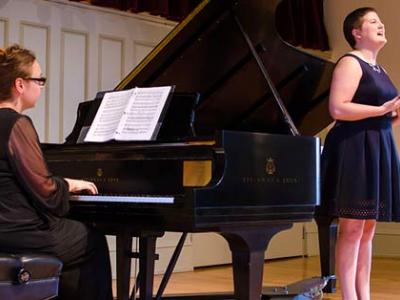What does a Teaching Artist do?
For professional artists, educational institutions have long been havens: providing much-needed funding and consistency through temporary positions like visiting artist and artist-in-residence. In contrast with these short-term positions, however, is an emerging career based around equal committment to the arts and education: the teaching artist. Teaching artists are neither musicians who give lessons to pay the bills until their big break comes nor great actors who give an occasional master class. Rather, they are working artists who acquire training in education and make it central to their professional life. They are committed to the marriage of pedagogy and artistry, using their work as artists to inform their teaching and vice versa.
Teaching artists might find that their careers and lives lean more towards the arts at one time and more towards education at another, and success could come from either direction—or both.
Because this is an emerging field, some murkiness still surrounds the public understanding of what a teaching artist does. Perhaps the best—or at least broadest—definition of a teaching artist is someone whose goal is to provide a tangible link between the creative process and arts-based learning. That is to say that teaching artists use their ongoing experiences as professional artists to develop their own curricula, lesson plans, and academic approaches. In addition to working in a school setting at K-12 schools and universities, teaching artists might also use arts-based education to work with groups including young children, business leaders, museum patrons, hospital patients, and prison inmates. Sometimes the goal is a practical technique-based education, while other times it's exposing students to new ways to express themselves emotionally and think creatively.
At a Glance
Being a teaching artist is as much a way of life as it is an emerging career. Most study their art as undergraduates and work as professional artists before discovering and pursuing an interest in education. Specific teaching certificates and advanced degrees in education could be necessary, depending on the type of positions one is pursuing. Teaching artists might find that their careers and lives lean more towards the arts at one time and more towards education at another, and success could come from either direction—or both. Still, teaching artists who work full-time at K-12 schools are well positioned to become program directors, while those who work for universities and conservatories could become higher education administrators, granting them increased responsibilities.
Teaching artists practice a wide range of arts, including music, dance, drama, opera, film, and writing. They might be employed by K-12 schools and private studios as traditional music teachers, dance teachers, and drama teachers, or by universities as professors. Teaching artists might also seek special training to work as early childhood educators, adaptive arts educators, or dance, drama, or music therapists. Freelance teaching artists could take performance/education jobs in non-traditional settings such as community centers, museums, hospitals, senior centers, homeless shelters, prisons, and social service agencies. This is often done through an educational nonprofit organization.
- Practical arts knowledge: music, dance, theater, visual arts, writing, etc.
- Creating a curriculum
- Leading a class
- Public speaking
- Time and classroom management
Teaching artists must have the ability to convert their artistic experiences into professional and educational approaches, infusing their teaching with authenticity, practicality, and depth—the qualities that separate teaching artists from non-practicing arts teachers and constitute the bulk of their appeal. The best teaching artists combine this unique perspective with lesson planning, classroom management, and communication skills. Confidence, public speaking abilities, and leadership qualities can only help.
Jobs for teaching artists may be full time, part time, seasonal, or short-term (e.g. a residency, teaching series, or workshop). Teaching artists' work lives vary greatly depending on their employment situation, as well as the balance they're seeking between making art and teaching. Those who have steady employment at a school are likely to have a consistent schedule, while teaching artists who prefer to do nonprofit work may bounce from job to job.




















